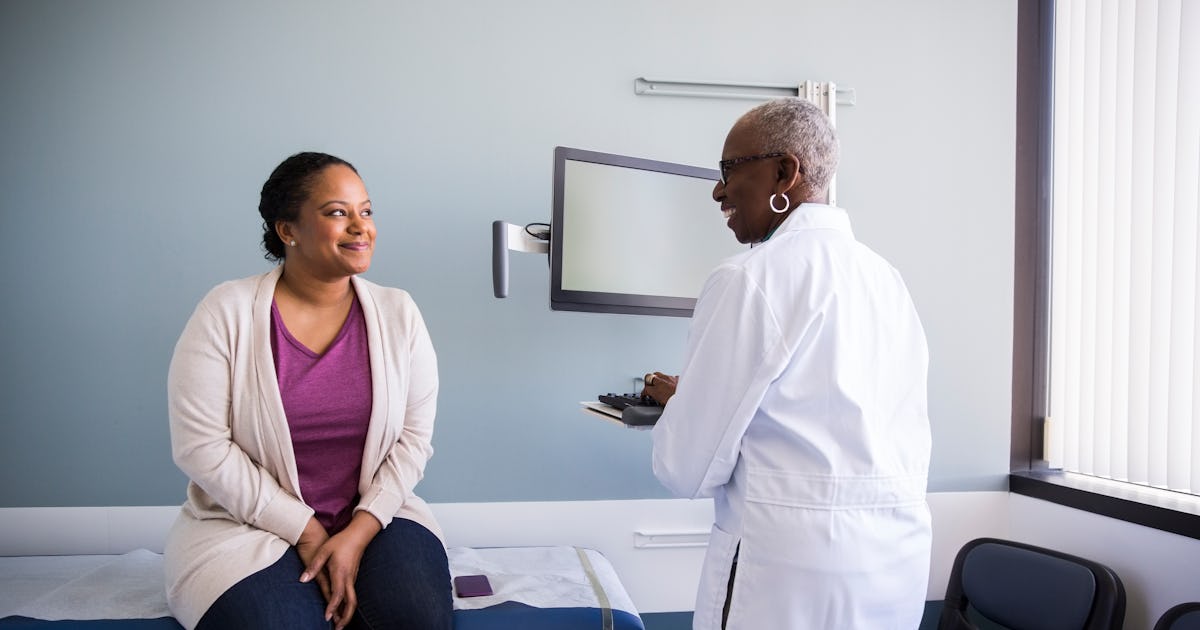At the end of 2024, I was getting ready to meet up with some friends visiting from out of town. As I wrestled my hair into a slicked-back ponytail, I noticed it. Whoa, why is my part so much wider? My ponytail seemed a little smaller, too. I started paying attention and realized I was shedding a lot more hair than usual every time I showered. Like… a lot. I’m only 32, but maybe I was beginning to experience normal, age-related thinning, or maybe something was up. I started researching what I could do to help my hair grow back in, took hair supplements for months, and tried lots of regrowth scalp serums, but nothing helped. So, I did what we all know we’re supposed to do for this sort of thing, but we put off because it’s pricey — I went to my doctor (specifically, my dermatologist, since they’re the experts in hair loss).
If you’re considering doing the same, here’s everything I brought with me to the appointment, what we discussed, and the treatment plan she gave me (the product is available over the counter).
What To Bring To Your Hair Loss Appointment
When I scheduled my appointment, the nurse on the phone asked me to print out and bring any lab results I had from the past year. I was diagnosed with three chronic illnesses just within that time, so I happened to have a ton of recent lab work to show for it. (Yay, silver linings?) My dermatologist’s office also had a brief questionnaire about my hair loss and things I’d noticed — widening part, extra shedding, et cetera — to complete and bring along.
I also made a list of all the current medications and supplements I take, as well as the products I use on my hair, just to make sure I got my money’s worth out of this appointment. If the doctor looked at my dry shampoo and said, “Oh! That’s known for making people go bald, so just stop using that,” it would’ve been worth the effort.
What Happens At A Hair Loss Appointment
When my dermatologist came in, she asked me some questions about my hair, like how long I’d been dealing with the extra shedding and what I had noticed in terms of thinning. Was my hairline receding? Was I thinning all over or mostly on top? Those sorts of things. She also took a really close look at my entire scalp to check for any rashes, irritation, or signs of anything amiss.
We chatted about my labs as well. She asked me to recheck my vitamin D levels — they were normal but on the low end, so she suggested it might be beneficial for me to supplement them a bit — and my iron, since I hadn’t had that lab done before. For someone without a binder of bloodwork from the last year, just be aware that list might be longer.
She explained that my scalp looked healthy and that, based on my lab results, I didn’t appear to have any underlying health issues or deficiencies to blame for my hair loss. So, she asked about whether I’d gone through any surgeries, serious illnesses, or major stressors in the months leading up to noticing my hair loss. I did experience a pretty bad flare-up of my chronic illnesses in the month preceding it, I said, but aside from that, I couldn’t think of much.
Ultimately, she said I was either dealing with androgenetic alopecia, which is essentially just a genetic hair loss pattern affecting the front and top of your head, or telogen effluvium, a temporary hair loss brought on by stress, trauma, or illness. Either way, the treatment would be the same: minoxidil.
How My Dermatologist Decided To Treat My Hair Loss
What your doctor might recommend for you could be completely different, because everyone’s reasons for thinning hair are unique to them. For me, because we had so many labs to look at that showed I wasn’t deficient in any nutrients and my thyroid is healthy, we could go ahead and rule those things out. However, you should always look into underlying health conditions that can cause hair loss to ensure your whole body is healthy. We decided on topical minoxidil for me, and here’s why.
Minoxidil is the active ingredient in Rogaine and other topical hair regrowth products, and it also comes in pill form. We talked about the pros and cons of both. With a topical foam or liquid, you have to put it on daily, forever, or the results go away, and it can take a good 10 minutes to apply all over if you have long hair and need to part it a bunch of times to get to your scalp. The pill is quick and easy, but it can promote hair growth on the entire body since you’re not applying it to a targeted area. I shave anyway, so the idea of that didn’t bother me. But I have POTS, a condition affecting my blood pressure. Oral minoxidil isn’t recommended for me as a result, which left me with the topical option.
My dermatologist was very clear about two things here: Buy the 5% minoxidil products, not the 2% products often marketed to women. She said 5% is proven to be both safe and more effective for everyone, and she said that I didn’t have to buy brand-name Rogaine — the generic kind works just as well. Whether to buy a liquid or a foam was up to me, as she said that’s just a matter of personal preference. I bought the foam kind and have been spraying a dollop on an old foundation brush to apply to my scalp more easily.
My derm was also very clear about what I should expect: that hair regrowth is a marathon, not a sprint. She’d see me back in six months to determine if the minoxidil was working or not. But in the grand scheme of things, six months isn’t all that long, and I’m hoping starting now will help me feel confident in my hair for years to come.
Disclaimer: This content was automatically imported from a third-party source via RSS feed. The original source is: https://www.scarymommy.com/lifestyle/went-to-dermatologist-about-thinning-hair-treatment. xn--babytilbehr-pgb.com does not claim ownership of this content. All rights remain with the original publisher.



